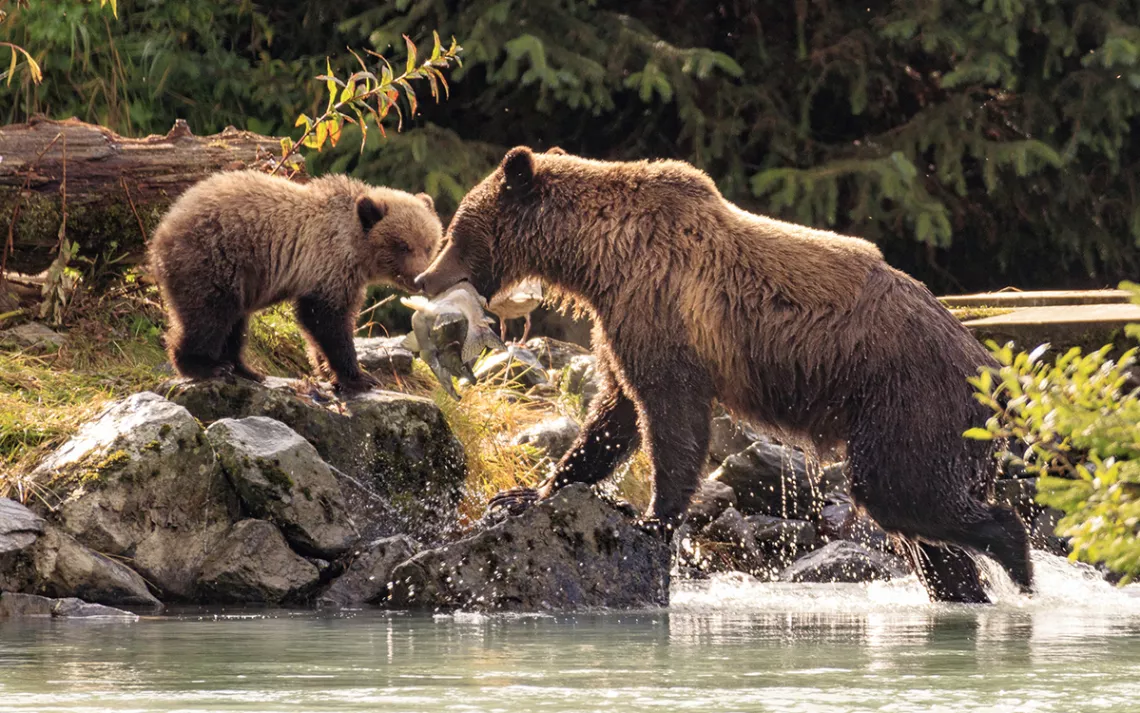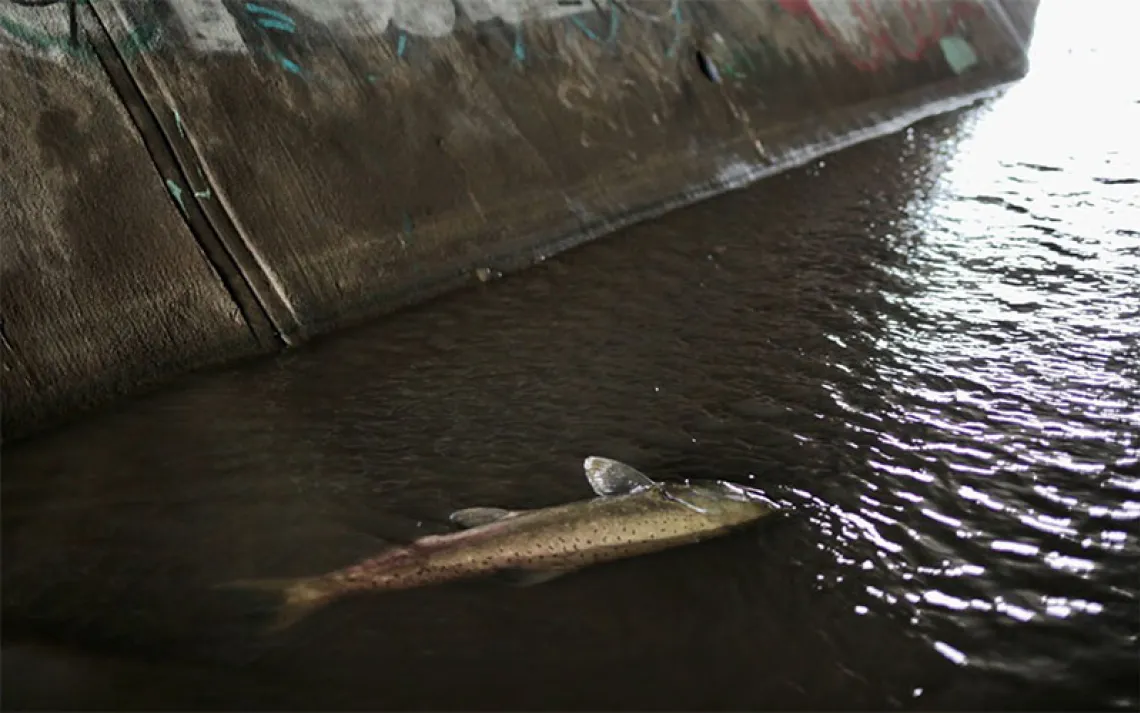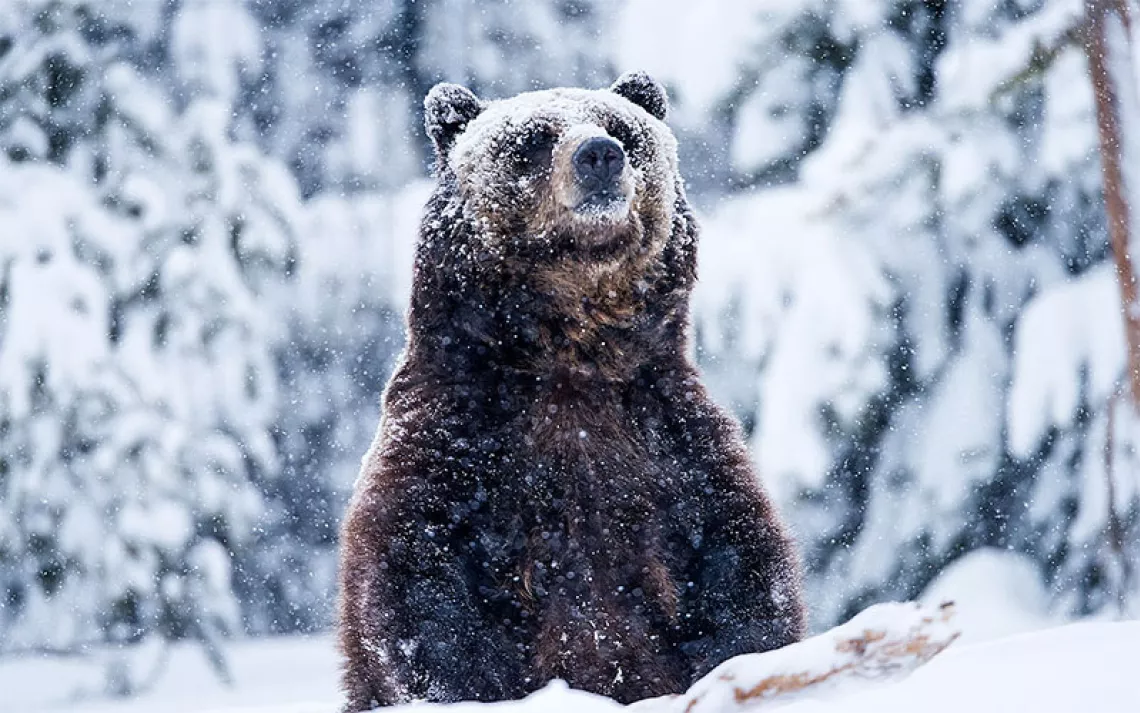Grizzly Bears Are Back—on the Endangered Species List
Feds finally comply with court ruling and return protections to Yellowstone bears

Photo by Jef Wodniak/iStock
Two years ago, for the second time in a decade, officials at the US Fish and Wildlife Service attempted to remove protections for grizzly bears in and around Yellowstone National Park. And, for the second time in a decade, a federal judge in Montana again told them, yeah right. Now, nearly a year later, the Feds have finally complied with the judge’s court order, announcing on July 31 that they have relisted the grizzly as threatened under the Endangered Species Act. “It must have been a slow day for the Fish and Wildlife Service,” said Mike Garrity, executive director of the Alliance for the Wild Rockies, an organization that has fought against the delisting of grizzly bears for years.
In 2017, the Fish and Wildlife Service delisted Yellowstone grizzlies and transferred the job of managing them to the states of Montana, Wyoming, and Idaho, which planned to open a limited grizzly hunting season. The agency’s decision was on shaky ground. The Fish and Wildlife Service had tried to delist the Yellowstone grizzly in 2007, but were ordered to relist it after conservation organizations, including the Sierra Club, successfully argued that the government hadn’t considered the bears’ rapidly declining food sources.
A handful of conservation organizations and Native American nations once again sued to stop the delisting—and once again prevailed. Last September, a federal district court judge in Montana, Dana Christenson, ruled that the Fish and Wildlife Service failed to examine how removing protections for Yellowstone grizzlies would affect the species in other parts of the country and ordered it to relist the bear.
In another move that echoes the legal battle of administrations past, the Fish and Wildlife Service has appealed the court order to the Ninth Circuit Court in San Francisco. “The court stated that FWS must conduct a ‘comprehensive review of the entire listed species’ on remand,” attorneys for the Fish and Wildlife Service wrote in the appeal, “an unwarranted, burdensome directive that goes well beyond requiring that FWS address the effect, if any, that delisting a [distinct population segment] has on the rest of the species.” Conservation organizations and tribes are set to respond to the Fish and Wildlife Service’s appeal.
While animosity toward bears is perhaps age-old—a fear of large carnivores is written into the national imagination of the West—ranchers and big-game hunters around Yellowstone have only been fixated on removing protections for grizzlies since 2007. That year, conflicts between bears and elk hunters in the heart of Yellowstone, and with ranchers on its periphery, skyrocketed. The Fish and Wildlife Service argues that this is evidence the bears have fully recovered and are expanding their habitat. Conservation groups and scientists point out Yellowstone’s population of adult females—the engines of population growth and the promise of any future the species might have—plateaued in the early 2000s and has remained stagnant ever since.
“Even if you were to buy the argument that there are more bears, that’s still not enough to explain the magnitude of the increase of their distribution,” said David Mattson, a retired research wildlife biologist for the US Geological Survey who studied Yellowstone grizzlies for more than a decade.
Instead, Mattson argues, the loss of key food sources due to climate change—including whitebark pine nuts and army cutworm moths—and the loss of Yellowstone Lake’s cutthroat trout population to invasive lake trout is driving grizzlies farther into human-dominated landscapes in search of calories. Outside the Greater Yellowstone Ecosystem, bears are confronted by an environment dramatically different than the one that existed 200 years ago but a culture that hasn’t changed much at all. Bear deaths—the top cause of which is conflict with people—have increased at a rate of 9 to 11 percent each year. “In my mind, when you weave all these various threads of evidence together, it creates an impeccable story,” Mattson said.
Before 1800, an estimated 50,000 grizzly bears roamed from the Great Plains to the California coast, and south into Texas and Mexico. When the Fish and Wildlife Service first listed the grizzly bear as threatened in 1975, that number had dropped to fewer than 1,000. As part of their recovery plan, government scientists highlighted six ecosystems, or “recovery regions,” with enough habitat to accommodate the bears. Grizzlies in the Greater Yellowstone Ecosystem—a more than 30,000-square-mile area containing parts of Wyoming, Montana, and Idaho, with Yellowstone National Park at its core—have made an impressive recovery from fewer than 150 to around 700 today.
Other than Yellowstone, the recovery region where grizzlies have had the most success is the Northern Continental Divide Ecosystem, which includes Glacier National Park and the Bob Marshall Wilderness in northwest Montana; there are more than 1,000 bears there. The other recovery areas have significantly less: There are around 50 in the Cabinet-Yaak in Montana’s far northwest; 40 in the Selkirk Mountains in northern Idaho; and less than 10 in the North Cascades. A male grizzly recently wandered into the Bitterroot Ecosystem in central Idaho, bringing the total population in that recovery area to one.
When the Fish and Wildlife Service delisted the grizzly in 2017, it essentially tried to carve the Yellowstone population out of the larger whole. Conservation organizations feared that delisting one population of grizzlies would provide a precedent for forces hostile toward ESA protections, such as the Trump administration, to remove protections for the entire species. “That’s a real threat,” said Josh Purtle, an associate attorney in Earthjustice’s Northern Rockies office. “And the Fish and Wildlife Service never contemplated that possibility.”
Before grizzly bears are delisted, conservationists argue that the six distinct populations throughout the western United States need to be connected. Grizzlies occupy only 2 percent of their historic range in the contiguous United States, and each population is confined to its own island on dry land. “No isolated population has every really survived in the long term,” said Sarah Pawlowski, an organizing representative for the Sierra Club’s Greater Yellowstone Northern Rockies campaign. If the populations aren’t able to move between each other, the result will be inbreeding. At that point, they are lost.
“The Fish and Wildlife Service really failed to look at the bigger picture,” Pawlowski said. “If we’ve committed to restoring the grizzly bear population in the Lower 48, this is not how we can go about it.”
 The Magazine of The Sierra Club
The Magazine of The Sierra Club



